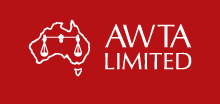|
The Australian Wool Production Forecasting Committee (AWPFC) has updated its forecast of shorn wool production for the 2019/20 season. This third forecast is for production of 272 million kilograms (mkg) greasy, a 9.2% decline on the 2018/19 estimate of 300 mkg greasy (Table 1).
Committee Chairman, Russell Pattinson noted that “High adult sheep slaughter rates in 2018/19, which were up 16.0% on 2017/18, reduced the number of sheep available to be shorn during 2019/20. Persistent dry to drought conditions, limited pasture and stock water availability in key wool growing regions combined with strong returns for mutton and lamb continue to reduce the number of sheep on Australian farms”.
The number of sheep shorn in Australia during 2019/20 is forecast to fall by 7.5% to 67.1 million, while average wool cut per head is forecast to fall by 1.7%. In New South Wales, shorn wool production is forecast to fall 13.7% (Table 2), Victoria down 4.8%, Western Australia down 4.7%, South Australia down 10.5%, Tasmania down 6.7% and Queensland down 17.3%.
The Committee’s August forecast of a 4.8% year-on-year decline in shorn wool production during 2019/20 was predicated on average seasonal conditions. Since then, reasonable seasonal conditions have only been evident in western Victoria where wool test volumes in some key regions have climbed above the 5-year average and in south-east South Australia and the mid-north of Tasmania where volumes are on par with last season. However, poor seasonal conditions in many other wool producing regions in New South Wales, South Australia, Queensland and Western Australia have continued through spring. As a result, average cut per head this season is expected to decline by 1.7% nationally to 4.1 kg greasy.
AWTA wool test volumes to the end of October 2019 were down 10.8% year-on-year while AWEX first-hand offered wool to the end of week 20 was down 20.1%. The decline in the latter is partly due to the recent volatility in the wool market which has resulted in high auction pass-in and withdrawal rates. ABS wool receivals from July to the end of September were down 16.1% compared with the same months in 2018/19.
|



